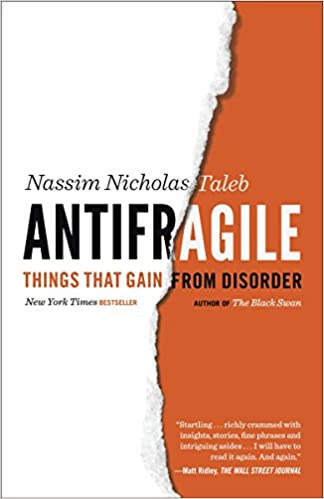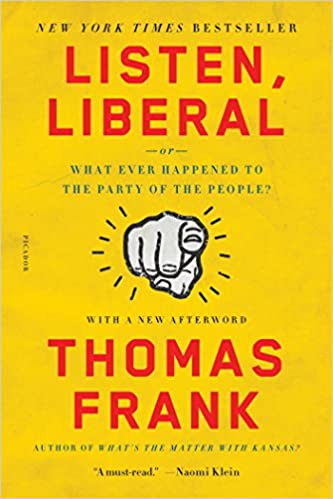A Few Good Books To Ponder: Part One
Keep reading on the habit list, it helps to infuriate and soothe the soul
Reading is a tough habit to break back into. The daily distractions offered by technology and video distort our sense of entertainment. Most of us have forgotten the solitude of reading in a quiet space.
At some point of your life, hopefully, you felt the full pleasure of reading, whether it was Harry Potter, Malcolm Gladwell or David Quammen. I’ll admit, I do not read science fiction, romance or other novels, those genres do not appeal to my sense of reality and reason. I am a non-fiction snob. That’s just the niche that I live in.
Using my teenage son as a science experiment, I’ve watched him succumb to the thrills of computer games, PlayStation 3 and 4 and the endless parade of YouTube frivolity. It’s been a constant battle to put a book, instead of a controller, in his hands. But there were moments when Harry Potter grabbed him by the eyeballs and pulled him into that fantasy world. A world that dominated his interest and imagination over the stimulation of supersaturated video games.
As a parent, reading is one of my three lifetime tasks: the other two being constant learning and playing music (instrument included). I rate it high due to its ability to bring forth calmness, serenity, insights, truth, exasperation, reasoning and alternative viewpoints and concepts.
Reading can be work or it can be recreation. It’s an investment that you choose to make or break off. The following selections are a hodgepodge of books that have made sizeable impressions on me for different reasons. There are two categories: Good Reads and Mediocre Misreads.
Good Reads
These are the books that make an impact. They offer new perspectives that shake up conventional thinking or clarify standard information with better understanding. The messages and concepts stick in your mind. They reach into your reasoning faculties and make sense.
The focus of the book is Stoic philosophy. It is not as stodgy as it sounds. The Stoics were Roman and Greek leaders that espoused facing up to your fears by living and dealing with the moment. They left the emotions aside to concentrate on possible solutions.
The title of the book sums up the philosophy. It is a truly powerful maxim. An obstacle is an opportunity. It provides the pathway to alternative routes once the main path is obstructed. The “Way” is a way out. It forces you to stop whining and moaning about your predicament and start thinking of ways to overcome the hurdle. You can repeat “the obstacle is the way” mantra anytime you encounter a difficult situation. It centers your thinking. It calms your stress. It allows you to start the process that will eventually solve the issue. It does not allow you to wallow in self pity. In modern parlance, it means to “get your shit together” and find an answer.
In my view, the topic supersedes the writing, since the latter is not particularly absorbing. The author does, of course, form the historical narrative and provide multiple examples of stoic application. But what is more valuable is the eyeopening concept that permeates your everyday decision-making and your attitude mindset.
The “Obstacle is the Way” is my go-to catchphrase. It never leaves my mind. It is applied across the board to meet the challenges of life. And that is the greatest gift of the book.
Geography is a great teacher. Natural borders, rivers, mountains, oceans, seas, land masses and other global features all play a part on how the continents are sliced up, marked off and mapped out. The implications are huge.
Tim Marshall, a journalist, covers the landscape with an observant eye. He maps out the geopolitical reasons for continental quirks, military skirmishes and the control of vital resources scattered over the globe. Each region is accompanied with maps that show the situation in greater detail and highlight the importance of seaports, pipelines and choke points.
The global economy is already showing its flaws during the pandemic. This book provides insights that help you to make sense of current events and view regional actions with a new perspective. It builds on past conquests and the post-World War II era and sets the stage for the unknown changes to come in the aftermath of the coronavirus.
As a heavy science reader, I appreciated the mixture of natural history and personal experience of this book, written with a lighter touch of an artist. It covers the five senses - smell, sight, touch, taste and sound - with a scientific mindset but also travels on alternative pathways of discovery. It is informative and ethereal at the same time.
The key insights for each sense highlight their value in the physical world and extend their benefits far beyond mere science. As one Amazon reviewer noted, “she takes us on a rich journey of the subtle and the sublime”. It reads like a spiritual travel guide, only escorted by the nose, eyes, ears, skin and tastebuds.
It will not satisfy everyone’s sense of a what constitutes a good book. But it will feed you a lot of interesting tidbits and make you appreciate the human body experience.
This is a monumental book, once you fully comprehend its ornery personality. The author, a mathematical statistician, pulls no punches against the wisdom of the establishment, whether esteemed economists or stuffy Ivy League pseudo-savants. It’s a deep dive into the world of probabilities, forecasting, randomness and the value of disorder.
It’s chock-o-block full of concepts and historical references that try to explain the new framing of fragile vs. antifragile, with robustness slotted in between the two. It brings into question the notion that uncertainty and randomness, along with shocks and stressors, are vital for growth and stability.
On the flipside, the obsession with technology, interventions and a preference for order as progress only causes complexity that makes the system vulnerable to unforeseen events. Strategic planning does not usually integrate nonlinear happenstances.
The book blows conventional thinking out of the water and presents a whole new dynamic for assessing exposure. It is a whirlwind of thought provoking ideas.
I tend to stay away from political books; too much tribalism. However, Thomas Frank speaks to my populist sensibilities and intrigues me by examining the loss of the people power movement in the USA. The bulk of the book shines a light on how the working class was coopted out of power by the ever dominant professional management class.
The chasm between Republican and Democratic agendas is now only a slight crack, mainly due to the cultural wars more than policy ones. American workers are now losing their grip on the political power structure that is dominated by the intellectual and stock market classes.
Knowledge, innovation and technology are the domains of leaders, thinkers and entrepreneurs. This is the future of capitalism. The voices of skilled technicians, farmers, factory workers, craftspersons and service sector employees are not heard anymore. The din of the economic machine cannot stop for any type of socialism for the people.
Despite the focus on political posturing and historical narratives, the book flows with plenty of wit, disdain and insights into the reasons that the country has lost its roots and its respect for the people. It’s essential reading to gain a better understanding of what’s to come and what to expect from the liberal mindset.
Mediocre Misreads
These books miss the mark to some degree. They are interesting as topics but a bit limited in presentation. They are not great reads that provide takeaways that stick in your craw. The effort is good, but the read is a slog.
This book caused a firestorm among the cultural and social justice warriors. For the left wing, it fed into the patriarchy and became a manifesto for the right wing. For those leaning more to the right, the book offered fatherly advice and some semblance of direction for befuddled boys and misguided men.
In truth, it is not controversial nor confrontational. It is just a stern talk from a father, a clinical psychologist and a self-help author. The uproar is really over Dr. Peterson’s refusal to use state-mandated pronouns in his classrooms in Canada. All of this hubbub spills over into any discussion of the merits of the book and his intentions.
The “12 Rules” capture some basic traits of responsible behaviour and general advice, such as “tell the truth” and “make friends with people who want the best for you”. Each rule is backed up with plenty of research and personal anecdotes from Peterson’s life and work.
The rules all ring true, but the aftertaste is lacking hearty substance. Nothing sticks in your mind as something to set in stone and place in your foundation. The takeaways are not that strong, even though the effort is substantial.
So far, Peterson is better in interviews than in books. Go listen to him on Joe Rogan’s podcast.
Steven Pinker is a straightforward cat. He sees the data, reviews the trends and interprets the story exactly how it comes out on the graph. And still he catches grief from those trying to highlight current victims over the progress made over the last few centuries. Good news seems to be too good for the present. But comparing conditions from the past does put things in perspective.
There is a wealth of information to sift through and Pinker takes on the task of aggregating the data and pointing out where humankind are better off than before. The overall effect is sort of a “greatest hits” scenario to highlight the positive developments made in such areas as health, the environment, peace and safety.
The enlightened tone of the book centers on reason and science as the prevailers of truth; whereas, the counterpoint sees them as an exertion of power. For the reader, its a juggling act to filter out the facts from the political, cultural and tribal aspects that influence our understanding and beliefs.
For those old enough to remember Dragnet, the book reminds me of Detective Joe Friday and his classic request to victims to provide “just the facts”. It’s up to you to determine where the truth lies and to wallow through the data dump.
In short, good research and good intentions do not necessarily equate to a good read. The authors are top-notch professionals that attack the modern notions of “cancel culture” and “triggering”, the reliance on feelings and an obsession with safety and overprotection. It is data driven and full of textbook concepts and calculations.
The main issue is that it reads like a college homework assignment. It is not woven into a story as much as following a syllabus. It even has regurgitated bullet point summaries at the end of each chapter. This book never got out of the lecture hall.
Today, information comes in a lot of accessible formats. The details and delivery in this book are better suited for a long-form article or a podcast. There is a lot of substance within these pages, it just feels like struggling in quicksand to get through the academic prose.
My appreciation to you for taking the time to read these selections and essays. I hope you find some enjoyment and insights about the world we live in. Thanks for supporting and sharing Continental Drift.
— Rick Scobi (@rickscobi)










